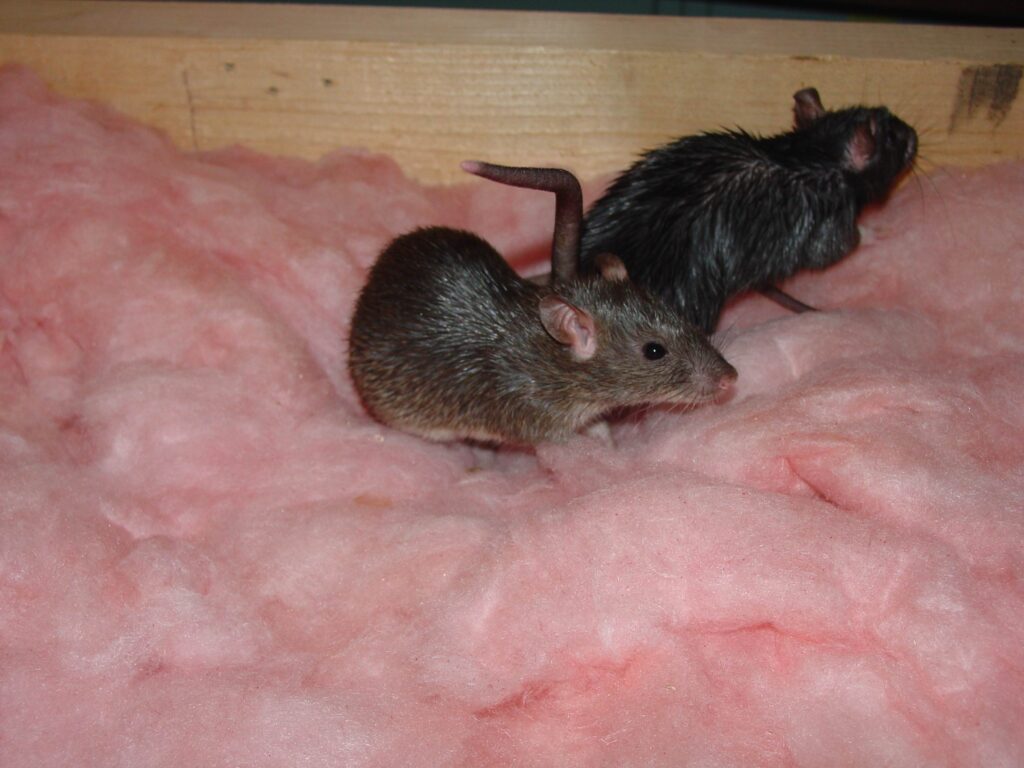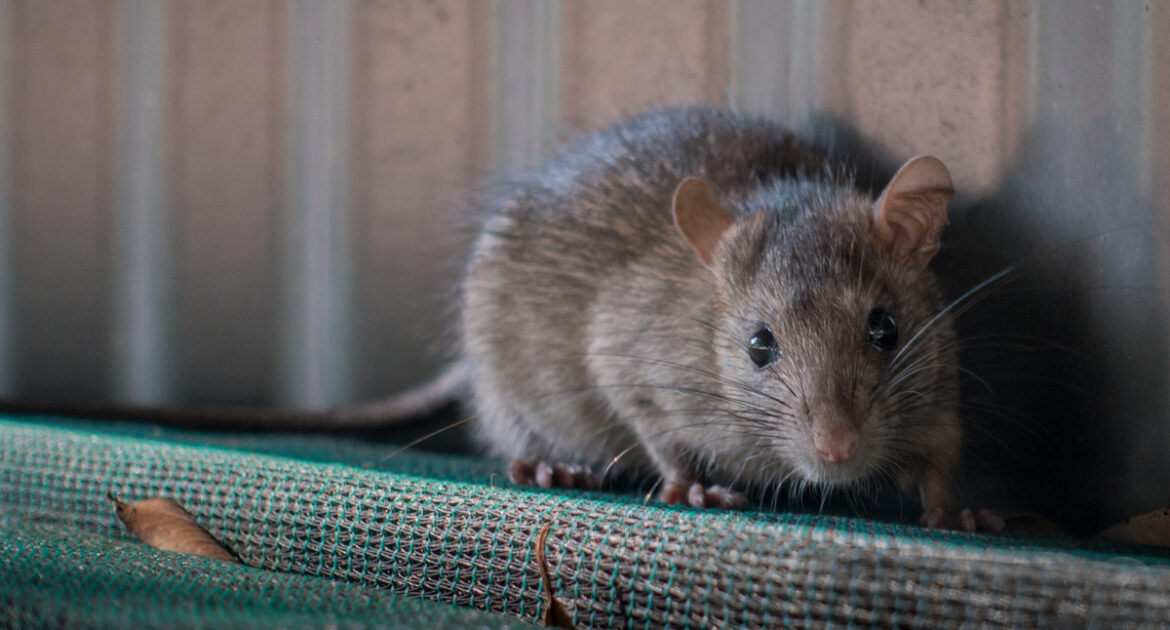When the birds start chirping and flowers unfold their vibrant colors, it’s not just a sign that spring is here. For homeowners in Minneapolis, it’s also a cue to be vigilant. Move over, spring cleaning – it’s time for spring rodent control, an essential but often overlooked aspect of home maintenance. While the warmer weather comes with many positives, the onset of spring may be providing an open invite to some unwanted guests: rats.
This comprehensive guide will help you decipher the subtle signs of a rat infestation and understand the risks and limitations of DIY solutions. It’s time to equip yourself with the knowledge to safeguard your home against one of urban wildlife’s peskiest nuisances.
Rats are not only unsightly and frightening to many people, but they also pose significant health risks. It is essential to identify early signs of infestation and act quickly.
Lastly, we’ll wrap things up by introducing you to the best solution for your rodent troubles – Skedaddle has been leading the field of wildlife control and rat removal for years and is trusted by millions of happy clients. Continue reading to learn more.
What are the 5 Most Common Signs of a Spring Rat Infestation?
As a warm season welcomes us, spring can also usher in some unwelcome guests – rats. Here’s what you should be looking out for:
- Signs of Gnawing: Rats have strong teeth and can gnaw through almost anything, from your furniture to your food containers. If you notice small chew marks around your home, it is a clear indication of an infestation. These gnaw marks can often be found on wooden structures, like furniture or the beams in your basement. They can also appear on plastic or cardboard, especially on containers for foodstuffs such as grains or pet food.
- Droppings: Rat droppings are small, dark, and pellet-shaped. A clear sign of a rat infestation is the presence of these droppings in your home. They are usually found in areas where food is stored, like kitchens and pantries. Be sure to inspect your property regularly, as these droppings can often go unnoticed due to their small size and typically being hidden away in isolated areas. Ignoring this sign could allow the infestation to grow, possibly leading to more severe issues over time.
- Scratching Sounds: Rats are nocturnal creatures. If you hear scratching sounds in the walls or the attic in the silence of the night, there’s a high chance you have a rat problem. These noises are often caused by rodents scampering around, making nests or gnawing on the structure of your house. Not only can this cause property damage, but it might also indicate a larger infestation that must be addressed promptly.
- Nests: Rats make their nests from shredded material like newspaper and cardboard. If you find any such nests in secluded areas of your house, it’s an alarming sign. Rats prefer dimmed areas for their homes, you may discover them in places like attics, basements, or rarely opened drawers. This unmistakable evidence potentially points to a rat infestation, urging you to investigate any other indicators of the unwelcome rodents immediately.
- Footprints and Tail Marks: Rats leave footprints and tail marks in dusty areas. If you see these signs in your basement or loft, it is time to contact a wildlife control technician, like ours. These slight impressions might be easily overlooked, considering their size. Consequently, vigilant observation becomes paramount during spring to control the possible infestation.
These signs are only the tip of the iceberg. An unchecked rat infestation can lead to larger issues.

What Dangers are Associated with a Rodent Infestation in the House?
An infestation is more than just a nuisance; it poses a serious health threat to you and your family. Rats can bring diseases and parasites into your home, all of which can affect your health. But, these risks are just the tip of the iceberg. Below, we outline the dangers associated with a rodent infestation.
Disease Exposure
Rats can carry a variety of diseases that can be transmitted to humans, either directly or indirectly. Direct transmission may occur through contact with rat droppings or urine, or via a bite, while indirect transmission can happen through ticks, mites, and fleas that have fed on an infected rodent.
|
Disease |
Method of Transmission |
| Hantavirus | Through the inhalation of dust contaminated with rat urine or feces |
| Bubonic Plague | Spread by fleas that have fed on an infected rat |
| Salmonellosis |
Consumption of food contaminated by rat feces |
Damage to Property
Rodents such as rats have strong, sharp teeth that they use to gnaw through almost anything – including wires, insulation, and wooden structures. This gnawing habit can lead to significant damage, including electrical fires and structural instability.
Food Contamination
Rats are always in search of food, and they are not fussy eaters. They can contaminate your food supply through their droppings, urine, and fur, posing a risk to your health and leading to food waste.
Clearly, an infestation is a serious concern that needs immediate attention. It is advisable to refrain from undertaking rodent control as a DIY task, as improper handling can spread diseases further. A professional wildlife control technician can help control your rat infestation safely and effectively.
What Potential Issues Might Homeowners Face When Attempting DIY Rat Removal?
When spotting the signs of a rat infestation, your immediate reaction might be to take matters into your own hands. While DIY rodent removal may seem like a proactive approach, it can present significant challenges for homeowners. Below, we outline some of these potential problems.
Improper Identification
Not every species is the same, and their behaviour can differ significantly. Identification can be challenging for the untrained eye and misidentification can lead to ineffective DIY solutions. For instance, a method that works for the common house rat might not work for roof rats or Norway rats.
Insufficient Expertise
Without professional training, it’s difficult to accurately detect and understand the full extent of an infestation. This lack of knowledge can result in temporary and ineffective solutions which do not address the root of the problem, allowing the infestation to persist.
Misuse of Rat Traps
Incorrectly setting up traps can turn a well-meaning attempt at rat removal into a futile exercise. The strategic placement of traps plays a significant role in their effectiveness, and without a deep understanding of rodent behaviour, you may find these efforts unsuccessful.
Potential Health Risks
Trying to remove rats from your home could result in direct contact with the rodents, putting you at risk of contracting harmful diseases. Moreover, the mishandling of rodents and traps may also lead to unfortunate accidents, posing a risk to both human and pet health.
Incomplete Removal
DIY methods often deal with the symptoms rather than the cause, meaning you might remove some rats but not address the root infestation. Inadequate removal can result in a vicious cycle of recurring infestations.
In contrast, a trained wildlife control technician is equipped with the knowledge and tools to safely and effectively execute rat removal. From the identification of signs of a rat in the house to understanding how they behave, professionals from Skedaddle Humane Wildlife Control provide comprehensive, long-term solutions for wildlife control in Minneapolis. While it is possible to attempt DIY approaches, the benefits of professional rat removal often outweigh DIY methods’ potential problems and risks.

How Does a Wildlife Control Technician Aid in Controlling An Infestation?
At Skedaddle, we apply the most effective, humane, and sustainable methods for wildlife control. Our professionals are well-equipped with a deep understanding of rat behavior and the right tools for proper rodent removal.
Our comprehensive approach begins with a thorough inspection of your property to identify the telltale signs of a rat in the house. This helps us locate their habitat, understand their patterns, and develop an effective removal plan.
- Step 1: Upon the first sign of a rat infestation, we conduct a comprehensive assessment of your property to identify entry points, damages, feeding habits, and the extent of the infestation.
- Step 2: We use humane removal techniques that respect the animal’s nature and ensure there is minimal impact on the surrounding environment. We use one-way exit devices, our tools are designed to ensure the rats are removed safely.
- Step 3: After removal, necessary steps are taken to prevent the rats from reentering. This often involves sealing entry points, improving sanitation, and providing guidance to homeowners on preventive measures.
- Step 4: We also provide clean-up services to remove rat droppings, urine, and contaminated insulation to prevent the spread of diseases.

Why is Skedaddle the Best Solution?
Unlike other pest control services, you’re not just a client with us. We consider ourselves partners in your mission to live in a rodent-free environment.
Our objective isn’t just to provide a temporary fix but to ensure a long-term solution that prevents future infestations. Our team consistently stays updated on the latest techniques and technologies in the field through regular training and development.
We understand the damaging impact a rat infestation can have physically and emotionally. Earning your trust and appreciation is a vital part of our service. Skedaddle Humane Wildlife Control is your go-to partner for all your wildlife control needs. We’re more than happy to assess your situation and provide an estimate.
Contact us to request a quote and learn more about our comprehensive services. You don’t have to fight the rat battle alone; you’ve got Skedaddle on your side.




